Aside from the low, sulking temperatures and frosty fields, a typical chalk stream in winter doesn’t necessarily strike you as a classic pike fishing scene. Then again, you wouldn’t necessarily think of Bob James as a pike angler. “I used to be really enthusiastic about pike fishing in the past,” he says. “Nowadays I target them only at certain times or when guiding. These days you could call me an opportunist piker.”
Predator fishing is very much a minority sport on rivers like the Test and Itchen. Even those beats where winter day tickets are available to coarse anglers don’t see a great deal of pressure. And yet, where left in peace, the pike are thriving. If these places have a history of culls and fly snobbery, things are slowly changing.
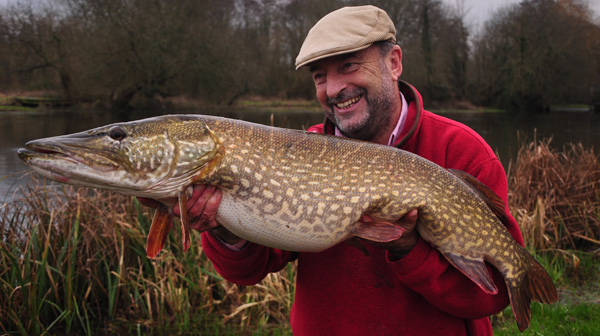
Bob has long been an advocate of game and coarse species living side by side. “I’ve never believed that pike are a serious threat to trout populations,” he muses. “They’re far more interested in the roach and grayling shoals.”
As facts rather than fiction about pike dawn on more river keepers, a healthier balance is being restored, at least in more enlightened quarters. Having kept an inquisitive eye on pike in many waters for decades, Bob is quick to point out their fragility, but also their ability to bounce back. “They just don’t handle pressure,” he laments, “which I guess is part of the reason my piking has slowed down.”
Culls are another issue wherever game species are also present, but Bob often regards these as fairly pointless. “I’ve been amazed at just how quickly a lost pike is replaced,” he comments. “You might get a bend on the river with a big old female, which somebody is desperate to remove. As soon as it’s gone, another pike slightly lower down the pecking order will move into the same, prime spot and pack on weight in no time. A season or two later you’ll find a fish that has reached similar size.” Nor have pike always had such a low sporting or culinary value, he points out, and in fact at certain points of fishing history, they were more highly prized than salmon.
Pike fishing highs
Say what you like about Bob, but his approach to any given species tends to be all his own, whether or not it agrees with the textbook. One of his biggest bones of contention with typical pike fishing is our assumption that we should present baits on the bottom. “So often with pike I think we assume they’re glued to the river bed, so we actually place our baits beneath them,” he remarks. “I catch a lot of fish on baits suspended in mid water- or even higher in the water column. On many days, I’ve guided clients who’ve tried baits on the deck and yet caught twice as many fish with lures fished much shallower.” As well as using presentations with deadbaits at less than half the depth of the water, he has also had success trotting.
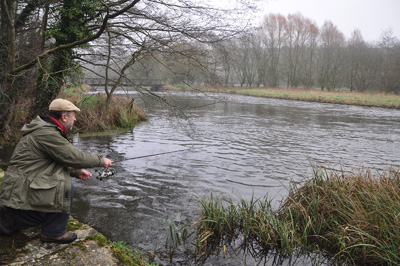 On the stretch of Test we find today, Bob enjoys casting lures, another method he really rates. This is another branch of fishing you might not associate with him, but after the success of ‘A Passion for Angling’ Bob worked for Rapala and travelled far and wide casting lures. He has fond memories of the lakes of Finland, for example. “We visited the Rapala factory and tested all sorts of plugs across several large lakes,” he recalls.
On the stretch of Test we find today, Bob enjoys casting lures, another method he really rates. This is another branch of fishing you might not associate with him, but after the success of ‘A Passion for Angling’ Bob worked for Rapala and travelled far and wide casting lures. He has fond memories of the lakes of Finland, for example. “We visited the Rapala factory and tested all sorts of plugs across several large lakes,” he recalls.
Trolling was never his favourite method, but this was exactly his task for an American fishing show shot in Scandinavia. “Anticipating some slower parts to the day I thought I’d surprise them,” recalls Bob. “I had a whole load of lures without vanes and hooks, straight off the production line. We were out on this huge water and nothing was happening,” he smiles. “I was that bored, so I grabbed a handful of plug bodies and threw them over the side. The Americans looked at me strangely and asked what on earth I was doing. ‘I think you call this chumming’ I joked. About a minute later, right on cue, my rod bent into a fish!”
Even further afield, Bob had an enjoyable time in America, discovering the world of competitive lure fishing. “They’re absolutely crazy over there,” he remarks. “The boats were incredible – to say nothing of the lures. Those anglers are ridiculously competitive in a way that’s never taken off over here. I remember the professionals would be casting non-stop for hours. Winning competitors were drug tested, and so the performance enhancer of choice was the chocolate bar, or ‘candy bar’ as the Americans call them, along with tins of coke. They’d carry bags full of the things to keep their energy and concentration levels up.”
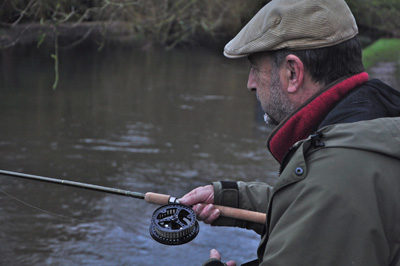 Bob was later to win first place in a big competition day in the most unlikely fashion. “All the boats were hurtling off into Lake Texoma, which is a vast place,” he remembers, “so I asked my boat partner if there was any rule against fishing from the bank, straight off the boat jetty.” His American friend was mystified at this. Why would he want to do that when they had a state of the art boat at their disposal?
Bob was later to win first place in a big competition day in the most unlikely fashion. “All the boats were hurtling off into Lake Texoma, which is a vast place,” he remembers, “so I asked my boat partner if there was any rule against fishing from the bank, straight off the boat jetty.” His American friend was mystified at this. Why would he want to do that when they had a state of the art boat at their disposal?
The answer was simple. “I’d seen the end of the previous day’s contest and noticed that all the big bass had been released right by the dock,” smiles Bob. “I’d seen something similar in my match fishing days when fish put back would hang around for quite some time exactly where they’d been released.” Casting his way around the jetty he caught several nice bass while the rest of the field were miles away studying fish finders. The only drawback was that the Yanks’ new friend the crazy Englishman had to buy a lot of drinks that evening.
Back to Blighty
As for Bob’s exploits with pike in Britain, it’s hard to know where to start. He had some great captures on the Hampshire Avon, where he also learned first hand just how quickly pike tales get distorted and rumors spread. “There was a stretch by an Inn that was especially productive. I’d fished behind an island and had a great day with five fish all between mid-doubles and nineteen pounds,” he recalls. “By the time I went to the tackle shop a week or so later, the story had already spread and ‘improved’!” he smiles. “The man on the counter asked me if I’d heard about the chap fishing the island who had five twenty pounders in a session.”
Today, he’s keen to explore the tail of a glide where he usually catches grayling. “When I’m trotting, I’d expect a pike to be sitting just downstream off the end of the shoal,” he remarks. “Quite often you’ll get a fish or two stolen here and they certainly like to eat grayling.”
He finds that the pike seldom move far from the bank. “I think it’s a common mistake to cast for the far bank when piking,” he says. “So often you’re better off casting along the bank, and so many good fish seem to be within a couple of rod lengths of the bank.”
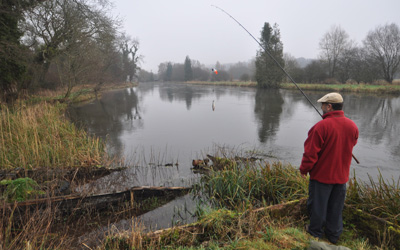 His ‘accidental’ encounters with pike have resulted in the discovery of some huge fish over the years. But does he really relish the appearance of the average jack wreaking havoc in his swim? “The amount of times on the chalkstreams pike have attacked my keepnet is crazy,” he comments. “I’ve had several attacks on the same day and sometimes they literally get stuck by the teeth.”
His ‘accidental’ encounters with pike have resulted in the discovery of some huge fish over the years. But does he really relish the appearance of the average jack wreaking havoc in his swim? “The amount of times on the chalkstreams pike have attacked my keepnet is crazy,” he comments. “I’ve had several attacks on the same day and sometimes they literally get stuck by the teeth.”
He has a big respect for pike however, even when his thoughts are on other species and they gatecrash his swim. “How can you not admire the pike?” he asks. “It’s the most ancient fish we have. They’ve established their niche over millions of years. There’s something perfect about a pike.”
It also strikes you that the idea of catching pike via the process of building a swim with maggots is one few predator anglers exploit. There have been numerous occasions when a large pike gave itself away by nicking the roach or chub on Bob’s hook. And while he admits not all of his pike were the original target he had in mind, his tally of three river thirties represents an impressive tally for any angler!
His other theories on pike are also interesting, particularly when it comes to the back end of the season when the big ladies show up. Although it’s a method he seldom uses these days, livebaiting threw up some strange experiences in seasons gone by. “We’d try everything for some of these big pike, but they just weren’t committed” he remarks. “It was as if you had to provoke them into a response that had little to do with feeding.” On some days, a dace would be taken repeatedly in the strangest fashion: the pike would bite almost from sheer annoyance but never move off with the bait or turn on it properly, resulting in frustrating sport.
“I think pike occupy distinct areas,” he states. “There are those where they feed, and those where they go to spawn. And that’s why you find the fish in totally different spots in the late season.” Could this also explain their weird behaviour around baits? “You have to ask whether these pike in spawning areas are really hungry? Or were they killing the baits because they were intruding a territory, perhaps threatening to move in to eat eggs once the pike had spawned?”
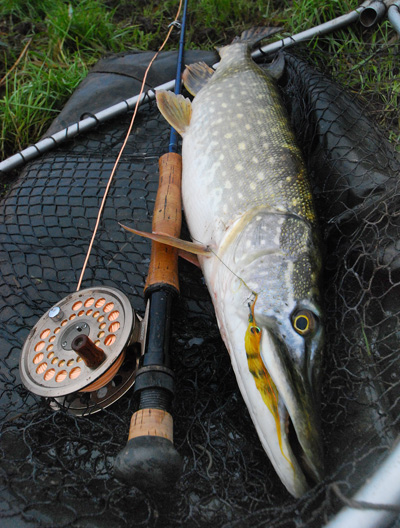 Bob also spent long periods observing and prebaiting for pike with interesting results on other waters. Having baited up areas several times, Bob found the pike would often only play ball well into darkness. Such was the case at Wimbledon Park Lake, a shallow body of about twenty acres. “I was going morning noon and night, with sprats, herring, and mackerel,” he remembers. “I also started tying baits to cotton to see where and when the pike preferred to take. Strangely, the colder the weather got, the later the pike wanted to feed. By January, there were times they only took baits at two or three in the morning, and were doing so in really shallow water.”
Bob also spent long periods observing and prebaiting for pike with interesting results on other waters. Having baited up areas several times, Bob found the pike would often only play ball well into darkness. Such was the case at Wimbledon Park Lake, a shallow body of about twenty acres. “I was going morning noon and night, with sprats, herring, and mackerel,” he remembers. “I also started tying baits to cotton to see where and when the pike preferred to take. Strangely, the colder the weather got, the later the pike wanted to feed. By January, there were times they only took baits at two or three in the morning, and were doing so in really shallow water.”
Changing attitudes
These days Bob confesses to a strong bias towards lure and fly fishing, methods he rates extremely highly. “Both lures and flies offer such a wonderful balance between efficiency and enjoyment.” He believes these also signify progress in both tackle and technique. “Hooks have improved massively and I’m tending to use trebles less and less,” he says. “I went through a stage of hating them. Two trebles with bait or lures caused a hell of a mess with landing nets to say nothing of awkwardly hooked fish to the point where I thought I didn’t want to put myself or the fish through that.”
As far as Bob is concerned, his methods and piking in general have ‘evolved’ to a large extent. “Soft lures or flies, with just a single hook are so much kinder than the plugs we once used- some of which had three trebles,” he asserts. “By using single hooks as opposed to groups of trebles you’re having comparatively minimal impact on the pike.”
Bob is especially enthusiastic about these newer trends. “Soft lures have revolutionized both pike fishing and pike welfare,” he says. “In many ways they’re better for fishing. When we used big jointed plugs with large trebles, they’d rarely hit one twice because they’re so hard and spiky. I’ve seen soft baits taken repeatedly and I like just one single hook.” He also likes the lower cost and versatility of such lures. “Not only are the soft lures great value, the much lower cost encourages you to be daring. You’re less afraid of casting to snags – not only because they’re cheaper, but because without hooks hanging off everywhere you’re less likely to snag.”
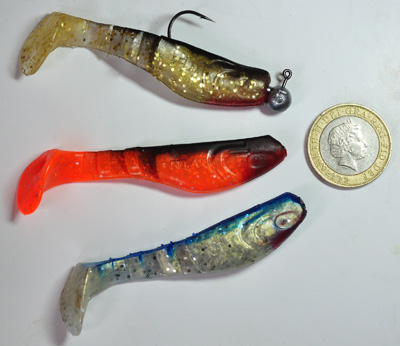 For Bob, it is attitudes that must change as well as tackle however. For too long, he believes, the mould for the British angler has been the out and out ‘trophy hunter’, who only cares about ruthlessly catching as many big pike as possible. You could argue that it is this size fixation that sees any ‘known’ large pike being relentlessly pursued and recaptured until its demise.
For Bob, it is attitudes that must change as well as tackle however. For too long, he believes, the mould for the British angler has been the out and out ‘trophy hunter’, who only cares about ruthlessly catching as many big pike as possible. You could argue that it is this size fixation that sees any ‘known’ large pike being relentlessly pursued and recaptured until its demise.
In contrast, he finds the ‘sporting’ attitude of the newer generation and particularly the Europeans and Americans healthier, where the ethos is ‘about having a good time, rather than just catching big fish’. He identifies fly fishing as part of this trend, as a method which is effective and hugely enjoyable, but also pike-friendly when carried out with suitable tackle.
The moral of the tale is therefore simple for our ‘accidental’ pike enthusiast. “I think it’s about meeting in the middle,” he believes. “If you value pike, and enjoy fishing for them, I think you have to consider what’s good for the fish as well as what suits you.” Sometimes that means giving the pike, as well as adopting new techniques. It means enjoying our fishing and refining those methods that have less impact on pike, rather than aiming to chalk up specimen fish at all costs. And while Bob might have that annoying habit of catching more pike in ‘opportunist’ fashion than many of us claim through slogging away at it, I think he makes a valid point.











